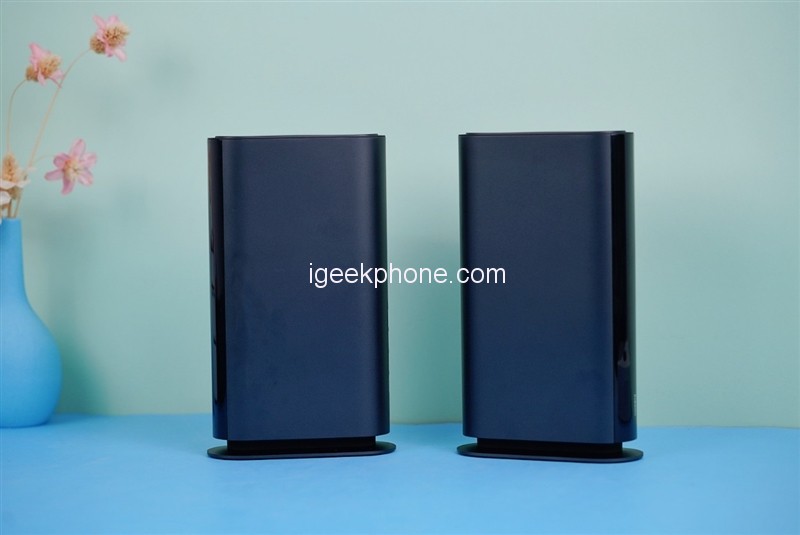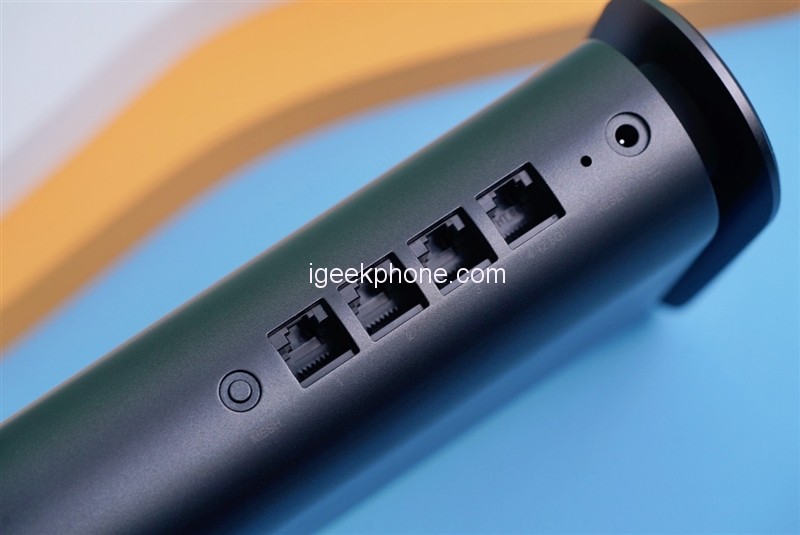With the development of Wi-Fi 6, Xiaomi not only entered the mainstream router market and achieved a counter-attack by word of mouth, but also firmly established a firm foothold in the high-end. At around 1,000 yuan, whether you want an entry-level or configuration experience full of wireless monsters, the Xiaomi router is the first choice for many users.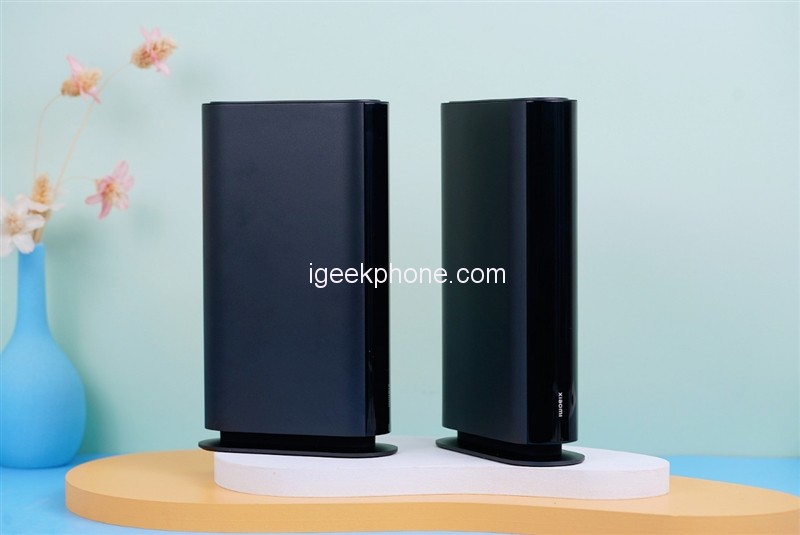
Xiaomi AX9000 has a 2.5G network port and a total wireless speed of up to nearly 9000Mbps. For most people, if you do not have specific professional needs, it is almost the end of your personal Wi-Fi 6 network equipment upgrade.
After AX9000, what new tricks can the Xiaomi router play? Today, Xiaomi also answered. That is to embark on a new category, from home routing to the exploration of large-scale distributed routing.
Therefore, the Xiaomi tri-band Mesh router came into being. Mesh is not an unfamiliar term, but it represents a better experience in brand-new products. It is no longer a single fight, but a complete set of distributed network solutions.
Regardless of configuration, management, and even quantity, it is all in one step. If you need large-scale wireless network coverage, “no high learning cost” and “you can use it when you buy it” are the best descriptions of this type of distributed routing.
In addition, the configuration of Xiaomi’s tri-band Mesh router is very similar to that of the AX9000. It can be said that it is a specialized version of the latter’s distributed routing networking. Its parameter highlights are as follows:
- SOC: Qualcomm IP5018 processor, the same high-end model, with excellent compatibility and speed performance.
- Wireless: 5.2G and 5.8G dual frequency bands, not only can meet the connection speed of up to 2.4Gbps for a single machine, 5.8G is used as a dedicated Mesh frequency band, and the wireless network does not slow down
- Interface: not only has a 2.5G network port but also supports dual LAN port aggregation function, computer/NAS can enjoy extremely high intranet wired speed
- Experience: The two bodies are pre-paired and can be used when plugged in. Support NFC touch connection, new device connection is very easy
- Connection: Support Mesh Bluetooth gateway function, can act as the control center of home smart devices
Next, we will experience the Xiaomi tri-band Mesh router in detail to see how it differs in signal, coverage, and experience.
Design & Appearance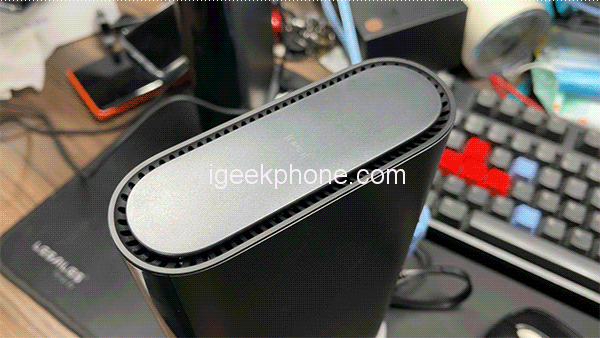
In terms of appearance, Xiaomi’s tri-band Mesh router has made a big improvement, that is, the external antenna has finally been removed. There is no flamboyant antenna, the overall body is more simple and beautiful, and the temperament is more suitable for the positioning of the home.
On the front of the fuselage, a bright plastic cover is used to make the whole machine more textured. However, the Xiaomi tri-band Mesh router does not support screen display. There are only changing bar lights under the cover, and the appearance of the whole machine is quite high.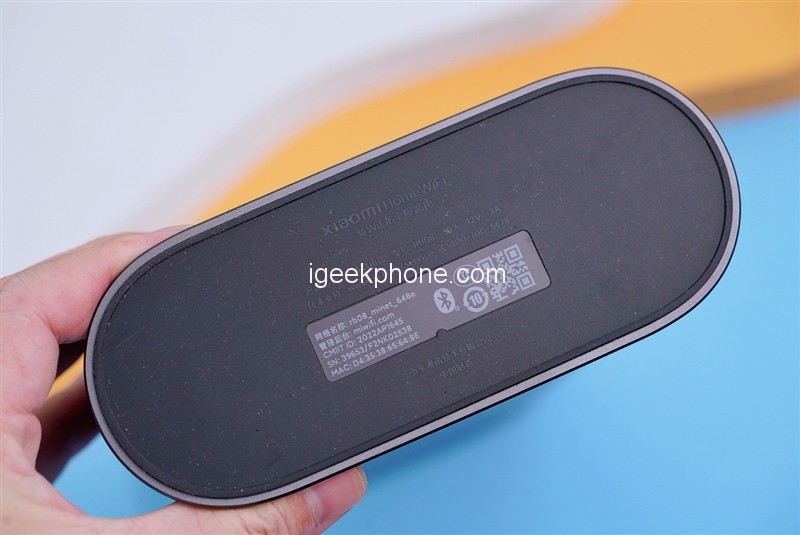
Built-in antenna + vertical shape, the heat dissipation is very simple, and there are vents on the top and bottom for passive heat dissipation. The top also has an NFC function, which allows the device to be connected with one touch; the bottom is equipped with a rubber cushion for more secure placement.
The most interesting part of the interface is the four network ports, one of which is 2.5G, and the other three are gigabit. Both support WAN/LAN self-adaptation, as well as dual LAN port aggregation function, the speed of intranet wired connection is very high.
In terms of accessories, a set of Xiaomi tri-band Mesh routers includes two routers, each with its power adapter and a Category 5 network cable, which can be used when connected.
Signal coverage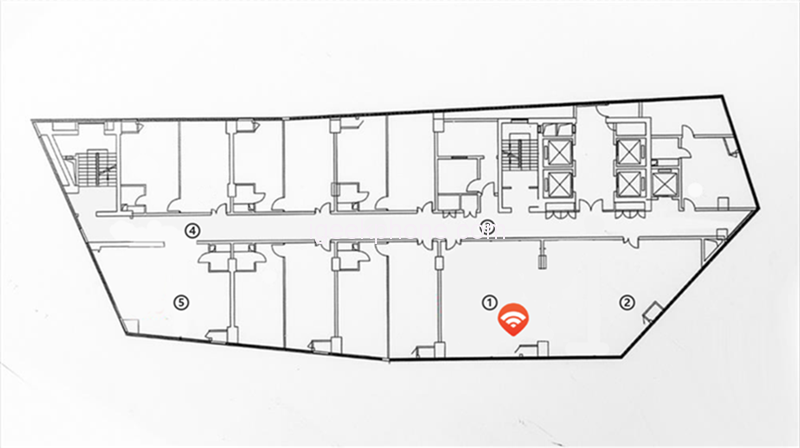
The built-in antenna is more beautiful, but how about the signal? Let’s test it directly in the test environment
Around the room, even if it is separated by a wall, the Xiaomi tri-band Mesh router can still easily run at full speed. And even at 4 o’clock, 20 meters away, he can still provide speeds of up to 211.5 Mbps on 5.2G Wi-Fi, and even 2.4G Wi-Fi is still available.
As a distributed router for large apartments, it is more than enough for a single machine to complete the network coverage of large flats. If you are using a wired mesh network, you can also unlock the dedicated frequency band for mesh backhaul to further open up 5.8G Wi-Fi for devices to use.
After opening the 5.8G frequency band, we found an interesting phenomenon. That is, the maximum near-field signal strength of 5.2G Wi-Fi has interfered with to a certain extent and has dropped slightly.
However, comparing the speed of each point, the difference in signal and rate is not obvious. The single machine can still meet the coverage of the large-level network, but the numbers of the strongest signal are a little unsightly, so you can still use it with confidence. Compared with the slightly interfered signal, the greatly improved band capacity of the open 5.8G frequency band is more valuable.
The configuration of 4 antennas can even increase the capacity by 2 times compared with the original 5.2G Wi-Fi that only used 2 antennas. Therefore, if you have the conditions to use a wired backhaul, we strongly recommend opening the 5.8G frequency band, which can greatly improve the stability of your network in an environment where there are many connected devices in a large apartment.
Speed
In terms of intranet wireless rate, the 5.2G Wi-Fi of Xiaomi’s tri-band Mesh router supports 2×2 MIMO and 160MHz bandwidth and can obtain a handshake rate of up to 2402Mbps.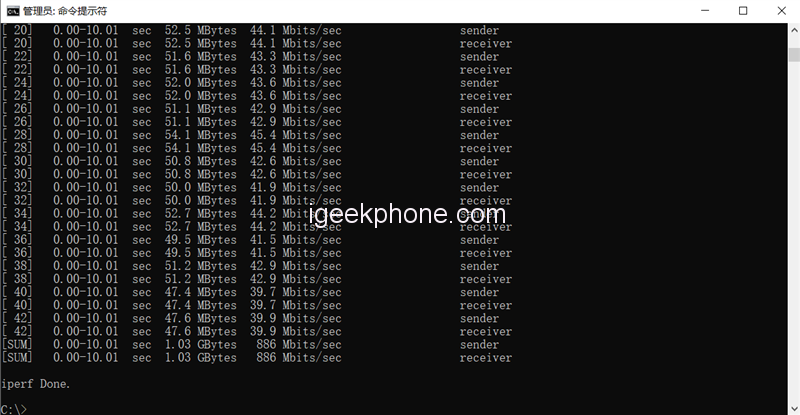
The 5.8G Wi-Fi supports 4×4 MIMO 80MHz bandwidth and 4K QAM modulation function, so the maximum speed of a single wireless connection is only 1441Mbps. However, this frequency band is also set to be dedicated to Mesh. The wireless networking speed of 2882Mbps is just full, and it is dedicated to the dedicated network. It can also avoid the defect that the Mesh networking rate of dual-band routing is halved.
In terms of the wired interface, it is a 2.5G network port + 3 Gigabit Ethernet port. According to the routing management interface, this generation supports LAN port aggregation and fixes the previous bugs that were common to 2.5G ports and Gigabit ports.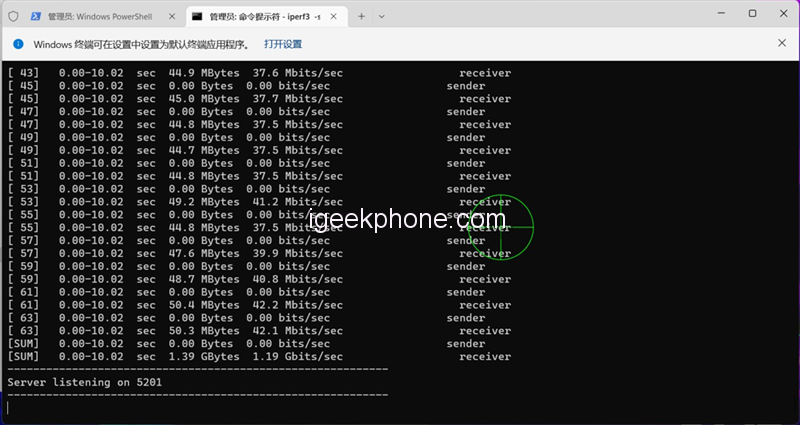
Therefore, in theory, the Xiaomi tri-band Mesh router can be aggregated through the 2.5G network port + dual LAN port, and the two devices can be wired with a 2.5G network speed. Just enough to meet the connection needs of a PC + a NAS.
Test the speed of the internal network, the first is the combination of Gigabit Ethernet port + wireless network. The theoretical connection speed of 2400Mbps can easily run the full Gigabit intranet bandwidth, and the speed is maintained at about 880Mbps.
Using the 2.5G wired interface for testing, the maximum speed can break through the Gigabit bottleneck, and the average speed is about 1.19Gbps.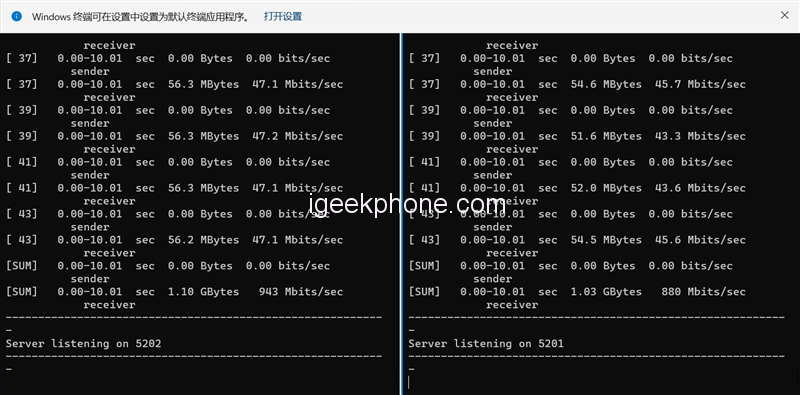
The Xiaomi tri-band Mesh router supports dual LAN port aggregation and 2.5G network ports. There will be no bandwidth bottleneck between the Gigabit port and the 2.5G port on the AX6000. However, for the sake of rigor, we still did the test.
Using two devices, simultaneously initiate transmission to devices with 2.5G network ports through the gigabit port. The average speed is 943 Mbps and 880 Mbps respectively, and the total speed is as high as 1823 Mbps. The bandwidth bottleneck of cross-port gigabit is also not on this product. does not exist.
Extended experience
What’s the coolest thing about Xiaomi’s tri-band Mesh router?
That is of course the factory pre-pairing, no need to set up to connect. The pairing speed is very fast. Plug in the power for about 30 seconds, and you can see the Mesh network point appearing in the APP. This generation supports NFC touch-to-connect, which is also very convenient to use.
You can try to make the password as complex as possible to improve security. When you need to connect, a pop-up window will pop up in seconds to ensure safety and the most convenient connection.
The router itself is also equipped with a Bluetooth gateway, which can be said to be truly born for smart homes. Many smart devices, such as hygrometers/thermometers, sweeping robots, etc., can be connected to the Internet through Bluetooth, and remote control and linkage are other layers of assurance.
In addition, this generation also has four built-in accelerators, and you can experience membership acceleration for up to 110 days for free. Acceleration from the router side is more stable, and it can be applied to the whole family.
Verdict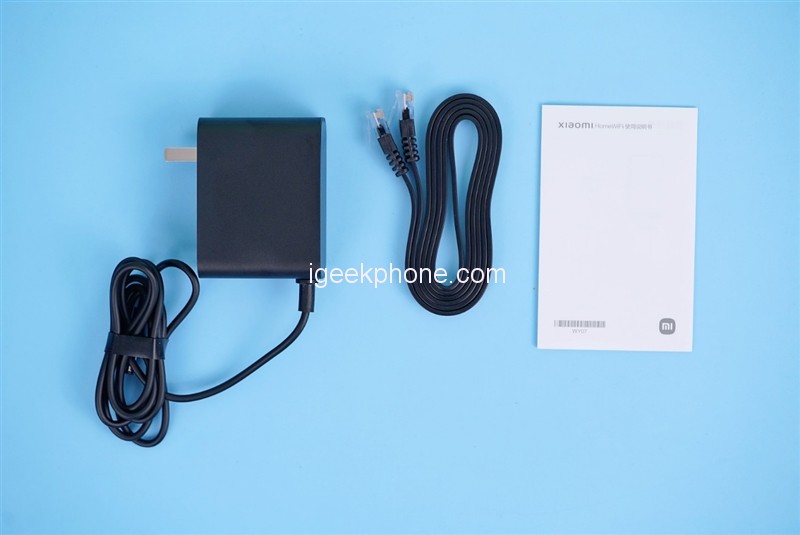
In terms of stand-alone configuration, its hardware specifications are between the Redmi gaming router AX5400 and Xiaomi AX9000, both of which are positioned as high-end, equipped with a 2.5G network port, support dual LAN port aggregation, and provide a total wireless bandwidth of more than 5000Mbps.
The difference is mainly reflected in the CPU, wireless solutions, and other places. The former is priced at 1299 yuan, while the latter is priced at 599 yuan. It can be said that the price of 749 yuan for the Xiaomi tri-band Mesh router is not expensive, but it is worth the money.
Judging from the actual performance, I think there are three main reasons for the Xiaomi tri-band Mesh router to be recommended.
The first is the extremely high hardware specifications.
The tri-band 6000Mbps wireless solution has ample bandwidth in terms of mesh networking and direct connection to devices. The additional Mesh exclusive 5.8G frequency can ensure that the wireless backhaul is still 2.8Gbps connection speed. Unlike the dual-band routing on the market, the network speed is directly folded in half after Mesh is turned on.
What’s more, it also has a 2.5G network port and three Gigabit Ethernet ports, which support dual LAN port aggregation. It also fixes the defects of cross-network port gigabit bandwidth bottleneck and dual LAN port aggregation occupying 2.5G network ports that have appeared in previous products. A Xiaomi tri-band Mesh router can perfectly meet your needs for high-speed connection to PC and NAS at the same time.
In terms of wired or wireless solutions, Xiaomi’s tri-band Mesh routing has achieved the flagship level. Even if the positioning of distributed routing is put aside, it is worth choosing as a single product.
After Xiaomi AX3600, if you want a product without an antenna, you only have the option of Xiaomi AX1800. However, because the release time of Xiaomi AX1800 is too long, it already has many regrets. For example, the wireless speed is too low, IPTV is not supported, etc., which has a real impact on the use.
The Xiaomi tri-band Mesh router is the first and only product in the current Xiaomi high-end router product series that uses a built-in antenna design. There is no antenna with claws and claws. Under the excellent industrial design, it is simple and full of technology. It is the peak value of Xiaomi’s high-end router.
Finally, the most important point is the easy-to-use Mesh extension. Mesh is no longer the selling point of Xiaomi’s tri-band Mesh routing because it has already become the standard configuration of current routing. And the factory pre-pairing and the smooth experience of networking when power is on is the biggest feature of it as a distributed router.
Although many products have achieved one-click mesh networking, the threshold for downloading and configuring the APP and entering the background of the web page is quite high for ordinary people. The Mesh networking of Xiaomi’s tri-band Mesh routing has achieved a real 0 threshold. You don’t have to explain too much to the elders, just plug it in and they’ll enjoy it right away.
In addition, there are design details such as NFC touch connection and Bluetooth gateway, which take into account the needs of the family more. As a router for large apartments, it can provide more convenient connections and additional smart home control. A large apartment with a large population and many smart homes can improve a lot of conveniences.
All in all, one sentence summarizes the Xiaomi tri-band Mesh routing. It has flagship-level wired and wireless specifications, and the built-in antenna design can be regarded as the peak of the series and the Mesh networking experience with zero thresholds. Honestly, if it weren’t for the kit version, I’d buy one for myself.
However, from the current point of view, it is still designed for large-scale multi-router distributed networking. As a challenge launched by leading, TP-Link and other traditional distributed routing brands, Xiaomi’s tri-band Mesh routing is full of sincerity in both configuration and pricing. If you happen to want to improve the network for your large home, it is the most worthwhile option to consider right now.
Read Also: Get Xiaomi Mi Band 7 Pro Smart Bracelet at €73.72 From TOMTOP
Do not forget to follow us on our Facebook group and page to keep you always aware of the latest advances, News, Updates, review, and giveaway on smartphones, tablets, gadgets, and more from the technology world of the future.










